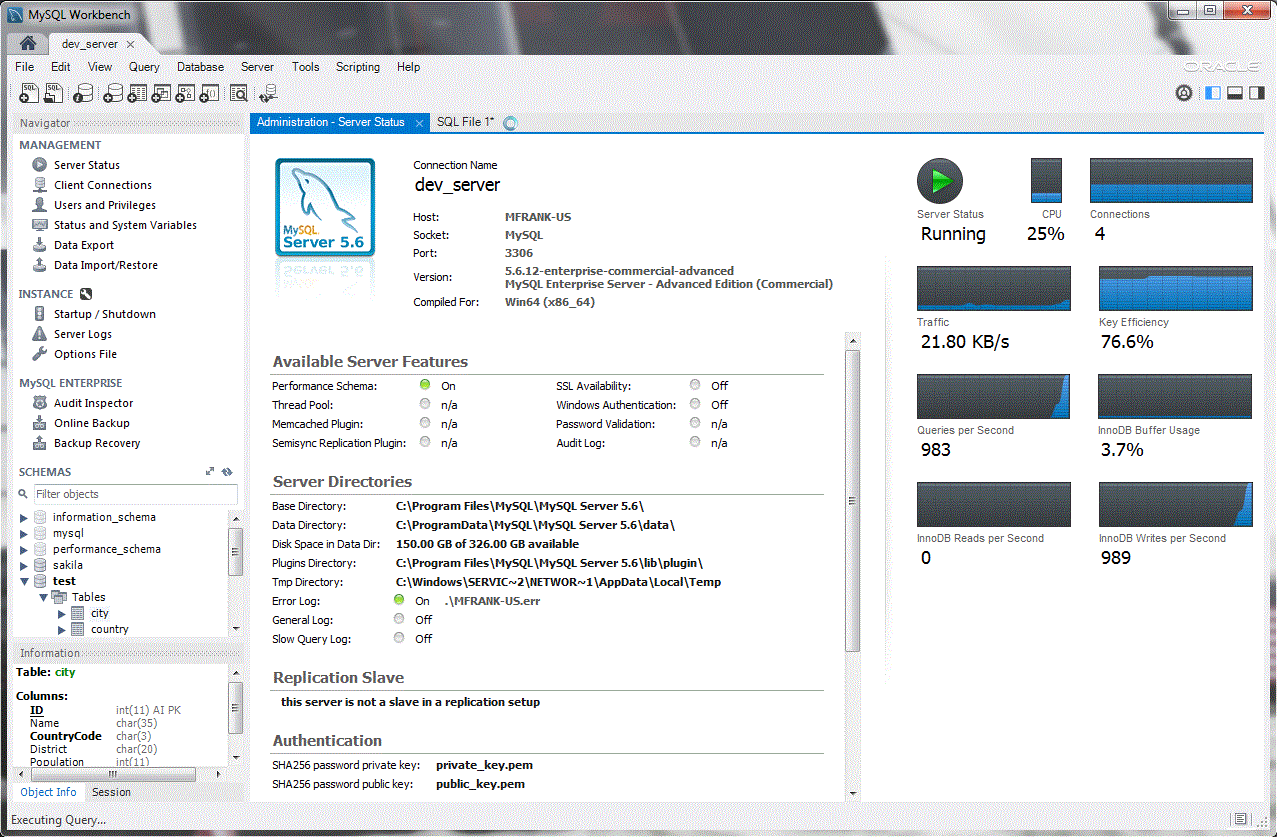Should I use Native MySQL on MAC instead of XAMPP?
To download MySQL in Mac, follow the following steps. Step 1: The first thing you need to do is open your browser and then type ‘mysql.com.’ This will open the MySQL page. Step 2: After opening the MySQL page, click on the ‘Download’ option located on the navbar. After opening the download page, scroll down and select ‘MySQL Community. Download the latest version of MySQL Connector/J for Mac for free. Read 1 user reviews and compare with similar apps on MacUpdate.
Probably not. XAMPP is a much simpler, fully integratedpackage which is a fit for the needs of this course. You can, however,substitute actual MySQL for the MariaDB used in XAMPP and use theremaining Apache/Php part of XAMPP, or, make separate installations ofthose components.Terminal shell, sudo, nano
It is important to be able to execute certain commands from the Terminal shell.On a MAC, as on other UNIX-like systems, administrative commands are usuallyprefaced by the sudo command:If you've never used sudo, it requests that you enter the password for your computer login on initial usage within each shell.Occasionally you have to edit administrative files and it is often easiest to do so from the shell as well. I would recommend the nano editor as the easiest to use:An alternative is to 'become root' and do the editing directly without the constantsudo qualifier. To do so, run:The hash prompt # indicates that you are root and can do administrativetasks without the sudo qualifier.Prepare for mysql shell usage
After installation, the mysql shell client will be:There are other useful client related client programs, all in the directoryand so it is a good idea to make them easily accessible. What youneed to do is add this directory to the executable PATH by adding thislineinto the 'appropriate' file: ~/.profile.Edit .profile by:In any case, add the one line:Be careful to have no spaces around the equals sign!Then quit this shell and start up another one. Test theeffectiveness of what you've done by typing this in the shell:You should see the /usr/local/mysql/bin component as thefirst component in the PATH variable.
mysql shell client will be:There are other useful client related client programs, all in the directoryand so it is a good idea to make them easily accessible. What youneed to do is add this directory to the executable PATH by adding thislineinto the 'appropriate' file: ~/.profile.Edit .profile by:In any case, add the one line:Be careful to have no spaces around the equals sign!Then quit this shell and start up another one. Test theeffectiveness of what you've done by typing this in the shell:You should see the /usr/local/mysql/bin component as thefirst component in the PATH variable.MySQL Installation
This is a free MySQL community edition packageavailable (in other, perhaps later, versions) fordownload from the MySQL home site:| Home: | http://www.mysql.com |
|---|---|
| Download: | http://www.mysql.com/downloads/mysql |
 ' file to reveal the installation file:If you have an older version of MySQL running, stop it first.Double-click to start the installation. MySQL version 5.7 automatically generates a root password and presents it to the user. Save this password. You must reset it after installation.If you do lose the password, you can still break in.
' file to reveal the installation file:If you have an older version of MySQL running, stop it first.Double-click to start the installation. MySQL version 5.7 automatically generates a root password and presents it to the user. Save this password. You must reset it after installation.If you do lose the password, you can still break in.Server Control
As of this recent version of 5.7, running on recent versions of MAC OS X, there is a MySQL Control Panel found in System Preferences.Opening it reveals:It is self-explanatory how to use this, but you can effectively 'turn off'this version of MySQL to avoid competing with, say, the XAMPP installation.Mysql client executable access
As indicated in the above section, add this PATH componentYou can check that the executables are in place by:Initially get in by:Once you're in reset the password (you cannot do anything until you've done so):Don't use your login password! This one is of much lesser importance.Test it:Password-less access
Instead of trying to remember this MySQL root password, create the following convenience filein your home directory(adjust if you have single quotes in your NEW-PASSWORD):Create test database and guest user
Create the user/database we employ in our examples:Verify that you can get in as guest with empty password:Download Mysql Query Browser For Mac Os X
MySQL Community Edition is a freely downloadable version of the world's most popular open source database that is supported by an active community of open source developers and enthusiasts.
MySQL Cluster Community Edition is available as a separate download. The reason for this change is so that MySQL Cluster can provide more frequent updates and support using the latest sources of MySQL Cluster Carrier Grade Edition.
MySQL 8.0 is the most current GA release. Download MySQL 8.0 »
Learn What's New in MySQL 8.0 and view the Performance Benchmarks.
Online Documentation:
| Looking for previous GA versions? |
Mysql Download For Mac Os X 10 11 Download Free
Please report any bugs or inconsistencies you observe to our Bugs Database.
Thank you for your support!